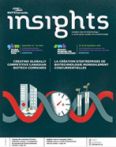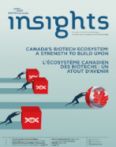Entrepreneurial Pharma: Confronting the Adage, “Experience Is Something You Get Just After You Need It.”
During my 23 years working in the entrepreneurial pharma environment I have witnessed many lessons learned and I continue to see many companies focusing primarily on reaching key funding milestones while neglecting good drug development practices. This is a mindset that can cost them dearly and deliver experience after it’s needed!
It is crucial for entrepreneurs to focus on creating a strong value proposition for the company, attracting the top investors and scientific advisors and moving quickly to key milestones and the additional funding they provide. It’s the nature of the environment.
However, at the same time, pharma development requires early and consistent compliance with regulatory guidelines and quality assurance standards and exemplary collaboration skills to enable critical preclinical and clinical trials.
The paradox is the need to move quickly AND carefully comply with regulatory requirements and solve technical challenges.
This can create confusion when weighing the “must haves” and the “nice to haves”. Often, many important elements are considered “nice to have”. Many entrepreneurs have trouble discerning which is which.
Usually, a lack of time or staff or cash is reason for projects moving ahead without the “must haves” like proper documentation or quality checks.
In addition, the outsourcing environment is something that is both art and science, something not fully appreciated by all entrepreneurs. Staffing at outsourcing firms varies in expertise, especially in the areas of regulatory strategy and documentation. This requires experienced oversight by the sponsor company.
Here are some real-world examples of my observations of companies that failed to focus on the fundamentals and paid the price:
When I was working as and independent consultant I contacted a small company planning their first NDA submission within six months. The CEO was a former colleague and I suggested that a few extra hours of review would be worthwhile. He declined. The NDA was rejected for inadequate stability data. The stability program had to be restarted (12+ months), the CEO was replaced and the company was restructured.
Issue: Lack of regulatory experience and contractor oversight.
A small company submitted their first NDA and received a Complete Response Letter because the clinical supply labeling controls were inadequate, calling into question assurance that placebo and active groups were documented correctly. Phase 3 had to be repeated.
Issue: Lack of labeling contractor oversight and delegation of GCP’s to the clinical site.
A small, virtual company received a “Refuse to File” designation from FDA for inadequate analytical methods and site stability issues in their 505(b)(2) NDA.
Issue: Lack of regulatory oversight and delegation of analytical activities to outsourcing contractor.
This same dossier contained clinical laboratory data for blood drawn from study subjects intended to demonstrate equivalence of their new product with the reference labeled drug. The FDA had been asking questions about data because there were numerous errors and inconsistencies. Upon closer review, it was discovered that the executive in charge of the program never had the clinical site, a prestigious university facility, audited for GCP/GLP systems.
A new experienced executive ordered a site audit that found significant documentation issues and no SOP’s. The study could not be salvaged and was run a second time at a qualified facility with close company oversight, incurring a 12 month delay and significant cost.
Issue: Lack of quality assurance and contractor oversight.
While it is natural for companies to move toward key milestones, Phase 2/3 clinical trials or partner due diligence rapidly, the following elements that can improve the probability of success should not be overlooked:
- Integrating quality, quality systems and downstream regulatory expectations with the science and project planning early and consistently
- Establishing systematic documentation of critical activities and data to support key milestones and decisions and regulatory interactions
- Integrating and mapping the roles and SOP’s for internal and external organizations and providing experienced oversight of outsourcing
Being entrepreneurial involves taking risks and pushing limits, but unnecessary development challenges and “learning experiences” can be avoided by engaging experienced resources early on.
How do you do this with limited time and resources?
Build a relationship with an Advisory firm that maintains an integrated cadre of seasoned staff with experience sorting the “nice to haves” from the “must haves” and dealing with different outsourcing cultures.
It’s a simple way to avoid “getting experience just after you need it”!



